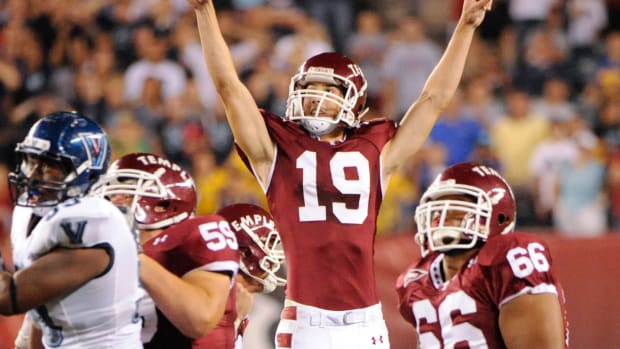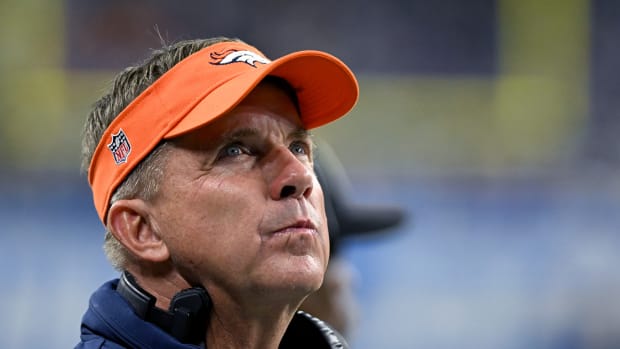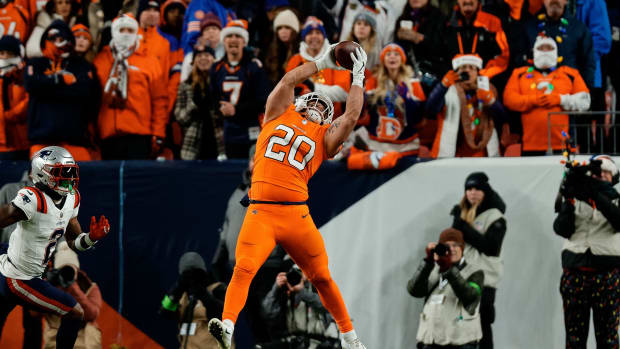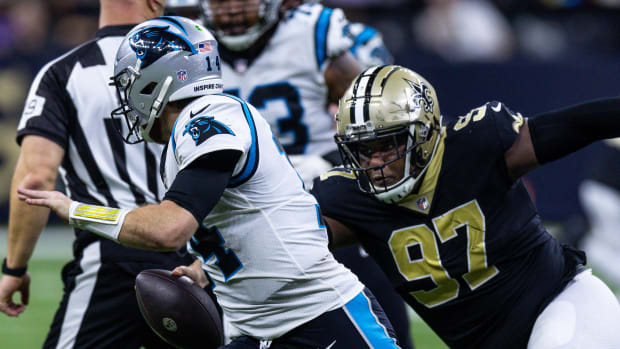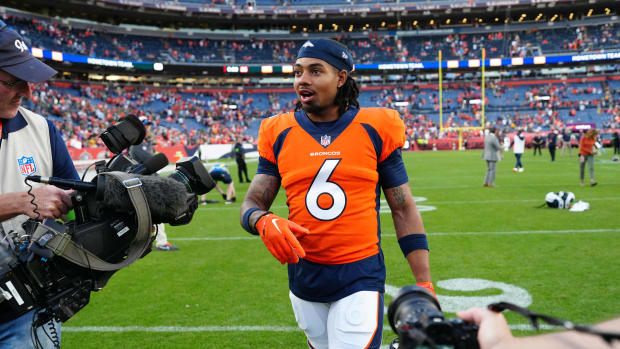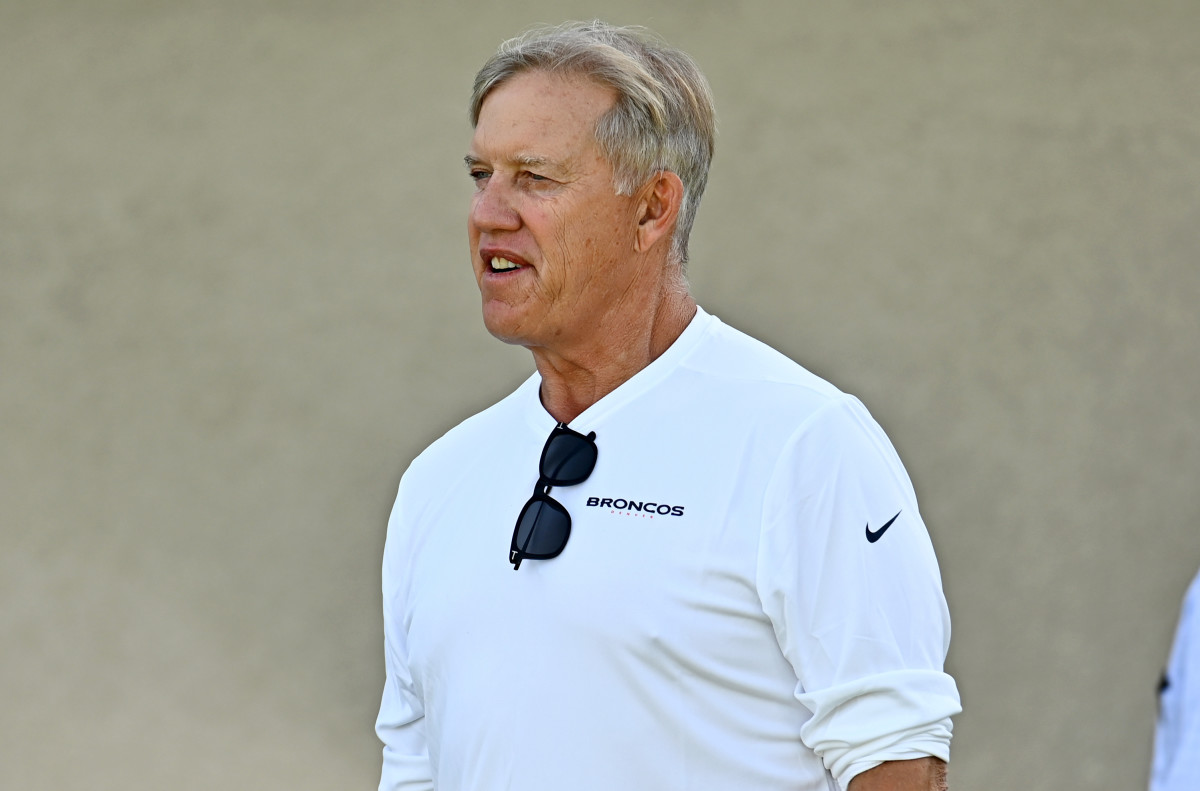
Here's why Broncos' hands are tied on signing additional free agents
The Denver Broncos currently sit at $2.3M below the cap. They have almost no wiggle room to add any veterans at certain positions to help with depth.
There is a theory that the Broncos could rectify this situation by parting ways with experienced players who have low-cost salaries but aren't performing well enough to stick around.
However, that theory doesn't work the way people think it does. It's because the top-51 cutoff aspect is in effect until 53-man rosters are set.
How the top-51 works
During the offseason, from the time the new league year begins to the time when 53-man rosters and practice squads are set (along with any players placed on injured reserves), only the top-51 cap hits actually count toward the salary cap. This is to allow teams to have the maximum of 90 players on the roster without exceeding the cap.
Once teams start cutting down their rosters to 53 players, place anybody on injured reserve who needs to go there and set their practice squads, all such players will count toward the cap.
People also must keep in mind that players won't collect a dime of their base salaries until the first week of the season. Thus, the only players you need worry about regarding base salaries are those who have them fully guaranteed. If they don't have any, it works this way: A vested veteran — or a player with at least four accrued seasons — who is on the 53-man roster the first week of the season gets that base salary fully guaranteed if it isn't already.
Any players with less than four accrued seasons who has no fully guaranteed base salary never gets it that way — that player can be cut at any time and the team doesn't have to pay him the remainder of his salary.
So with a player like Kevin Hogan, who may not make the final 53-man roster, there is no risk to the Broncos keeping him on the roster until final cuts are made. All he's received is a $300,000 signing bonus, but his base salary isn't guaranteed. If he doesn't make the final cut, the Broncos owe him no more money.
However, if Hogan is cut, the Broncos aren't going to realize as much cap savings as it first appears, because when final cuts are made, the top-51 cutoff goes away and everybody's cap hit counts. And right now, there are a few players who currently don't count against the cap, but will after the roster is finalized, who will no doubt surprise some people.
The players who currently don't count toward the cap include a number of players who are entering their second or third seasons in the NFL. I'm sure Broncos fans will be surprised to know that Phillip Lindsay's cap hit doesn't count at this time, but that's the truth. The same thing applies to other players who are no longer rookies, such as Keishawn Bierria, Jamal Carter, Alexander Johnson, Trey Marshall, Tim Patrick, Colby Wadman, River Cracraft and Troy Fumagalli.
There are a number of rookies who don't currently count against the cap, either. I imagine Broncos fans wouldn't be as surprised that undrafted players such as Malik Reed don't count for the moment, but the same also applies to two draft picks: Justin Hollins and Juwann Winfree.
What this means is, if you cut players with small cap hits, you won't necessarily realize a lot of cap savings, because other players you plan to keep count toward the cap, whether they make the 53-man roster or go to the practice squad (though in the latter case, they get much less money).
Cap calculator
After playing around with the cap calculator at Over the Cap, the Broncos would have an estimated $3.5M in cap space with 53 players on the roster, plus players who will be placed on injured reserve. Add in the practice squad and the Broncos will be a little more than $3M under the cap.
Consequently, if you are looking to gain cap space to add a veteran, you're going to have to look at the larger cap hits. But in each case, you aren't always faced with an ideal situation. Let's examine them.
Joe Flacco: On one hand, restructuring Flacco's contract would reduce his $18.5M cap charger. On the other hand, that means kicking dead money charges down the road when you may be ready to start Drew Lock in 2020. Better to leave Flacco's deal alone.
Emmanuel Sanders: The Broncos already hav a $1.5M salary guarantee to pay Sanders, he's the only wide receiver on the roster with extensive experience and teams aren't going to trade for veterans before the 53-man cutoff. And it's not likely the Broncos will extend him. Best to leave it alone.
Chris Harris, Jr.: The Broncos already gave him a raise through renegotiations and he's already signaled he wants to wait until after the season to consider his next move. There's nothing you can do here.
Derek Wolfe: Cutting him would free $8.5M in cap space, but you have to be certain you have somebody who can start in his place. I think the Broncos will want to move slowly with Dre'Mont Jones, so I don't see Wolfe being cut. I'd rule out an extension, too, because the Broncos really need to see how he plays this season before considering that.
Ronald Leary: With $5.35M in his base salary fully guaranteed, it's going to be hard to trade him. Better to ride out the season with him, though you could revisit a trade down the road.
Brandon McManus: Though you would save $2.75M in cap space by letting him go, it's pretty clear at this point that he'll be the kicker. Besides, he has played well thus far this preseason, so there's no point in moving on at this time.
Zach Kerr: The Broncos could save $1.75M in cap space with minimal dead money this year and next year by cutting Kerr. But given that he's good depth, I don't think it will happen unless others show they are far superior depth players.
Will Parks: He received escalators in his rookie contract that push his base salary to $2.025M. You would get a little breathing room by trading Parks. However, do you really want to do that, considering the coaching staff has a big role planned for him in the defense?
Adam Gotsis: You would think a second-round pick would net you a good chunk of cap space, but that's not really the case. Second-round picks don't get the escalators that other draft picks receive. Moving on from Gotsis means just $986,988 in cap space freed.
None of this means that you shouldn't move on from fringe players who have small cap hits — you simply need to keep in mind that moving on from them is for the purpose of keeping a better player, than it is about freeing cap space.
Looking ahead
There is some good news ahead, though. The Broncos are projected to have $47.7M in cap space in 2020, and that's before they move on from any players currently under contract for 2020.
For example, if they are confident that Drew Lock can take over as the starting QB in 2020, they can move on from Flacco and gain an additional $20.25M in cap space by cutting or trading him — and they would have no dead money from doing so! This is why you don't want to restructure Flacco's contract, so you have the ability to get out of the deal without taking any dead money charges.
You can also gain $8.5M in cap space by declining the team option on Ronald Leary's contract. Leary has no more guaranteed money left and the dead money charge is just $875,000 if his option is declined.
If you moved on from both Flacco and Leary, that would leave the Broncos with an expected $75.3M in cap space. That's more than enough space to extend players such as Shelby Harris and Justin Simmons, add players in free agency at positions of need, bring back any players who test the market, can't find better deals and will take team-friendly deals from the Broncos, and space left to sign draft picks.
Bottom line
In other words, Broncos fans need to think of the current roster situation as "short-term pain equals long-term gain," in the sense that having inexperienced talent for this season at inside linebacker, tight end or offensive line depth, could lead to a better situation next season, with the Broncos well-positioned to address those areas through either free agency or the draft. Don't forget the Broncos have a guaranteed eight picks in the 2020 draft, with potentially two more coming through compensatory picks.
It's tough to accept that there's not much room available to add any more veterans, but in the long run, the Broncos will be in better shape to improve the roster. By all means, make your picks for who on the current roster should make the final cut, but accept that there will be some rough spots with that roster this season, with improved ability to upgrade the roster next season.
Follow Bob on Twitter @BobMorrisSports.
